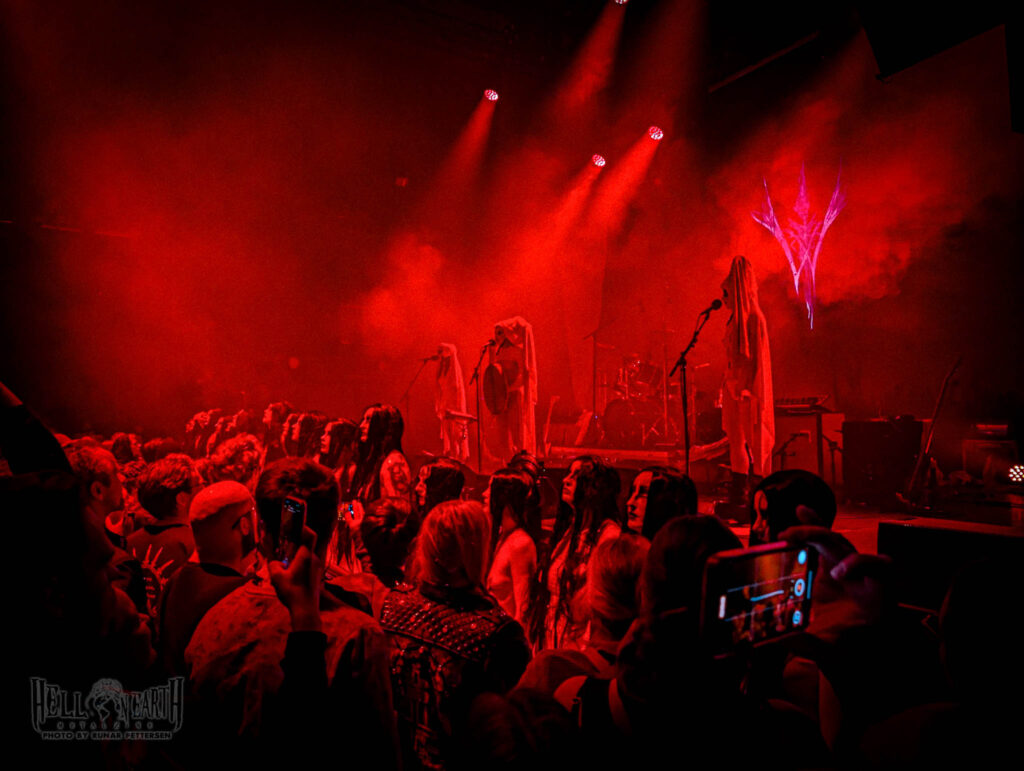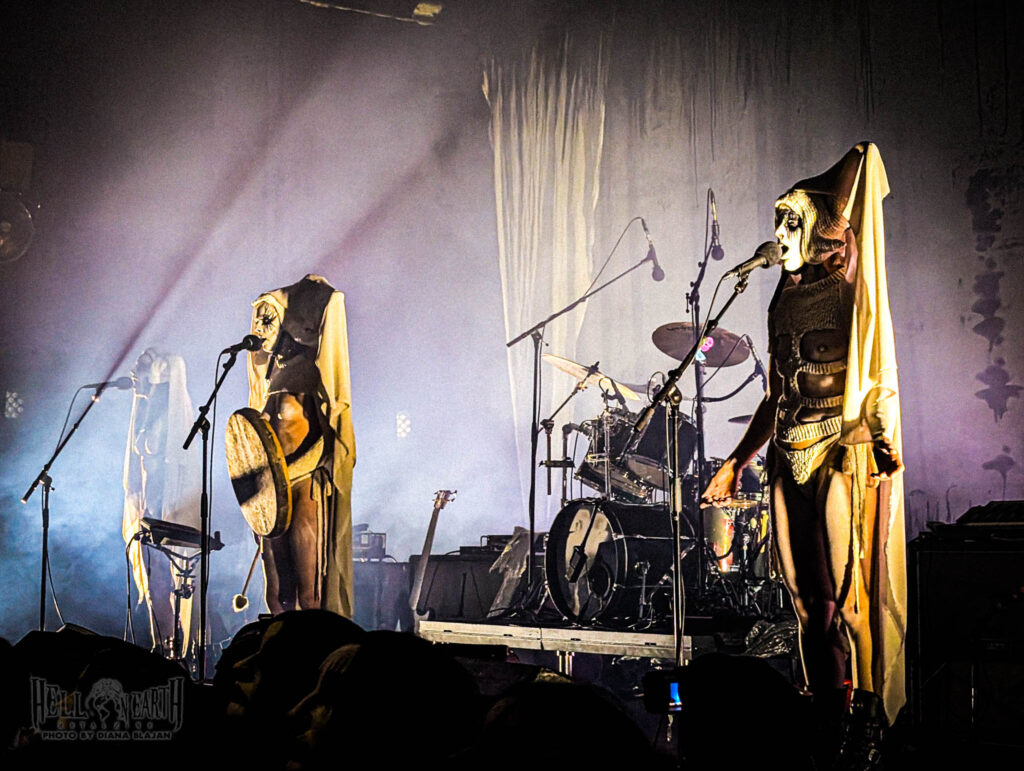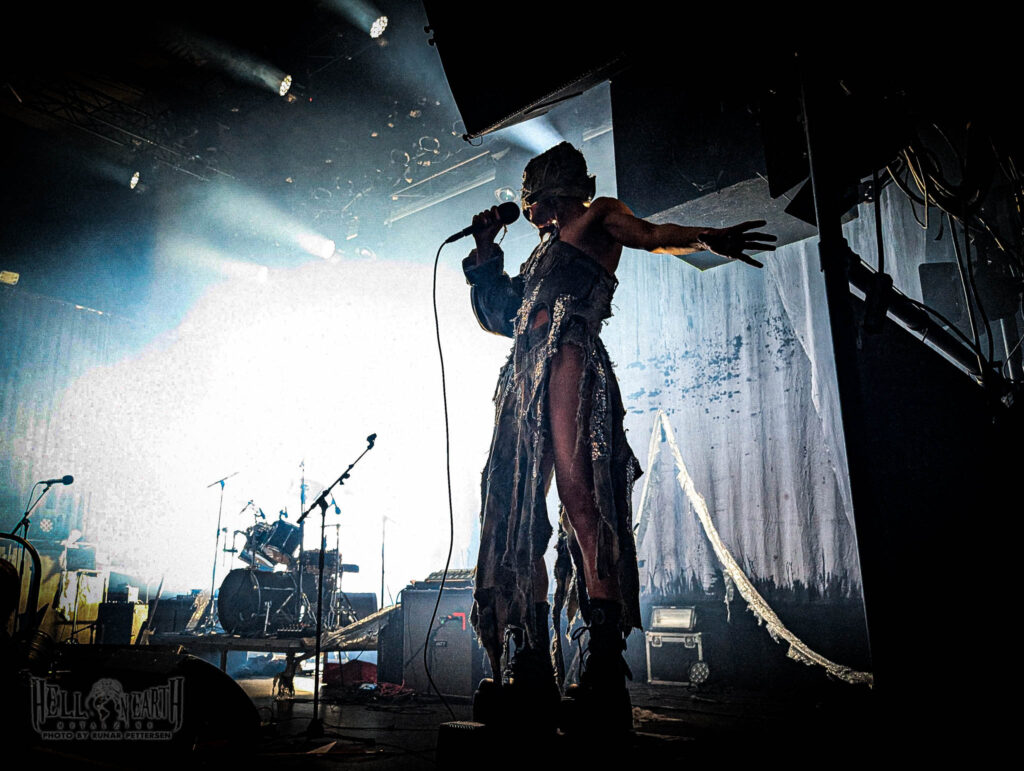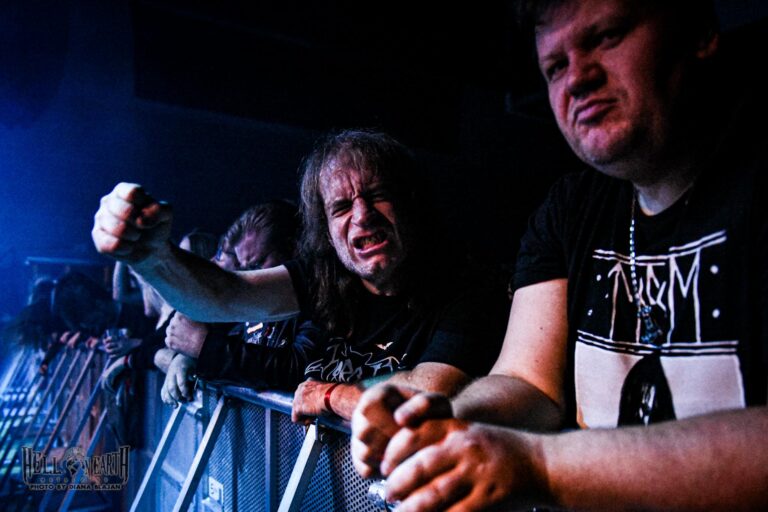
March 8 2025, Rockefeller, Oslo, Norway
March 8 is International Women’s Day, and what better way to celebrate than with a group of topless witches playing feminist black metal? We’ll get back to that in a moment.
First up was the experimental rock duo MoE. The last time I saw them, they also had a drummer. This time, however, they performed as a duo with only vocals, bass, and guitar. For me, this did not work well without drums. It felt like something was missing—an essential part of the music—making the sound feel odd and bare. That said, vocalist Guro Skumsnes Moe has a fantastic voice, and everything she does with it is impressive. She experiments a lot with different vocal techniques, creating a unique expression. However, the instrumental part left me less impressed. We’re talking very primitive riffs, almost at a Neanderthal level. So, despite Guro’s phenomenal vocal abilities, I quickly lost interest. It felt like a bit of a waste of a great vocalist when the instrumental side was so lacking on this particular evening. I’ve definitely seen MoE perform better before.
Right after MoE left the stage, about twenty witches dressed in white, wearing long black wigs—and topless—walked through the audience. They positioned themselves at the front of the stage, where the photographers usually stand, and screamed at the top of their lungs. Then Witch Club Satan took the stage and launched into their witch’s sabbath.

But let’s rewind a bit to understand what Witch Club Satan is and what this is all about. The band is a black metal trio that has only been active since 2022. Even before releasing much music, they gained recognition and landed gigs at major festivals. Just months after forming, they played by:Larm in Oslo. The following year, they were booked for Roskilde Festival, Tons of Rock, Norbergfestival, Høstsabbat, and Rock mot Rus—festivals that most young bands could only dream of. On March 8, 2024, their debut album was released, and the band sold out Rockefeller—a venue where I’ve seen Motörhead and Dio perform without selling out.
So how did such a young band manage such a meteoric rise? There are likely several reasons. First and foremost, a female band performing topless on stage obviously has a massive promotional value. But that alone isn’t enough—many other bands do the same without receiving this level of attention. The key here is the theatrical experience, the witchcraft theme, and, of course, black metal. Put all of these elements together, and you start to see why the band has made such an impact.

Witch Club Satan delivers an exceptionally powerful performance where the theatrical and visual aspects take center stage. It’s impossible to walk away from their show without a strong impression. The costumes, body language, background videos, and stage decor all contribute to the experience. There’s drama as we see the four elements written in the background. The Gaza flag appears. “Black metal is krig! War against war!” screams Nikoline Spjelkavik to the crowd. Everything is well executed, and I can only imagine they’ll take this even further in the future.
Not everyone sees the value in Witch Club Satan. Some critics don’t buy into either their Satanic image or their feminist message. Instead, they argue that the band is merely using sex appeal, since they perform half-naked on stage. There might be some truth to that.
But I’ll try to explain what they’re actually doing and why their values are valid. These are three women who are angry—furious at all the madness happening in the world. For Witch Club Satan, black metal is an outlet, a vent for their aggression. They do whatever they want, and they do it with full conviction. If they want to perform topless, they do so—and no one can tell them otherwise. These are strong women with strong opinions, and they refuse to be silenced. That is what Witch Club Satan is about.

Musically, Witch Club Satan doesn’t completely captivate me. But that’s not surprising—black metal has been around since the early ‘80s with Venom, Bathory, and Mercyful Fate, while the style and imagery we associate with black metal today date back to the early ‘90s. That’s over thirty years ago. So, it’s natural that newer black metal doesn’t feel groundbreaking.
Witch Club Satan also faces the challenge of being new to their instruments. They learned to play specifically for this band, which results in a very primitive style without much variation. I wish they focused more on riffs rather than simply hammering away at chords. After all, riffs are the soul of metal. That said, I was genuinely impressed by drummer Johanna Holt Kleive—her playing featured some unexpectedly cool breaks and fills. Additionally, the vocals are extreme and sound great. So the band does have something to offer musically. Let’s hope for more focus on riffs and stronger songwriting in the future.

I recently read an interview in Scream Magazine where guitarist Nikoline Spjelkavik said she doesn’t quite understand why the band is seen as a performance act in such extend. She believes they’re simply doing what other black metal bands do—just in their own way.
Here, I have to disagree with Nikoline. It’s precisely the performance aspect that makes Witch Club Satan so unique and innovative. That’s where their originality lies, and that’s what makes them so good. They should embrace this, as it’s what sets them apart. After seeing countless black metal shows in a genre that’s been around for over thirty years, it’s refreshing to witness a trio of witches doing something new and different.






